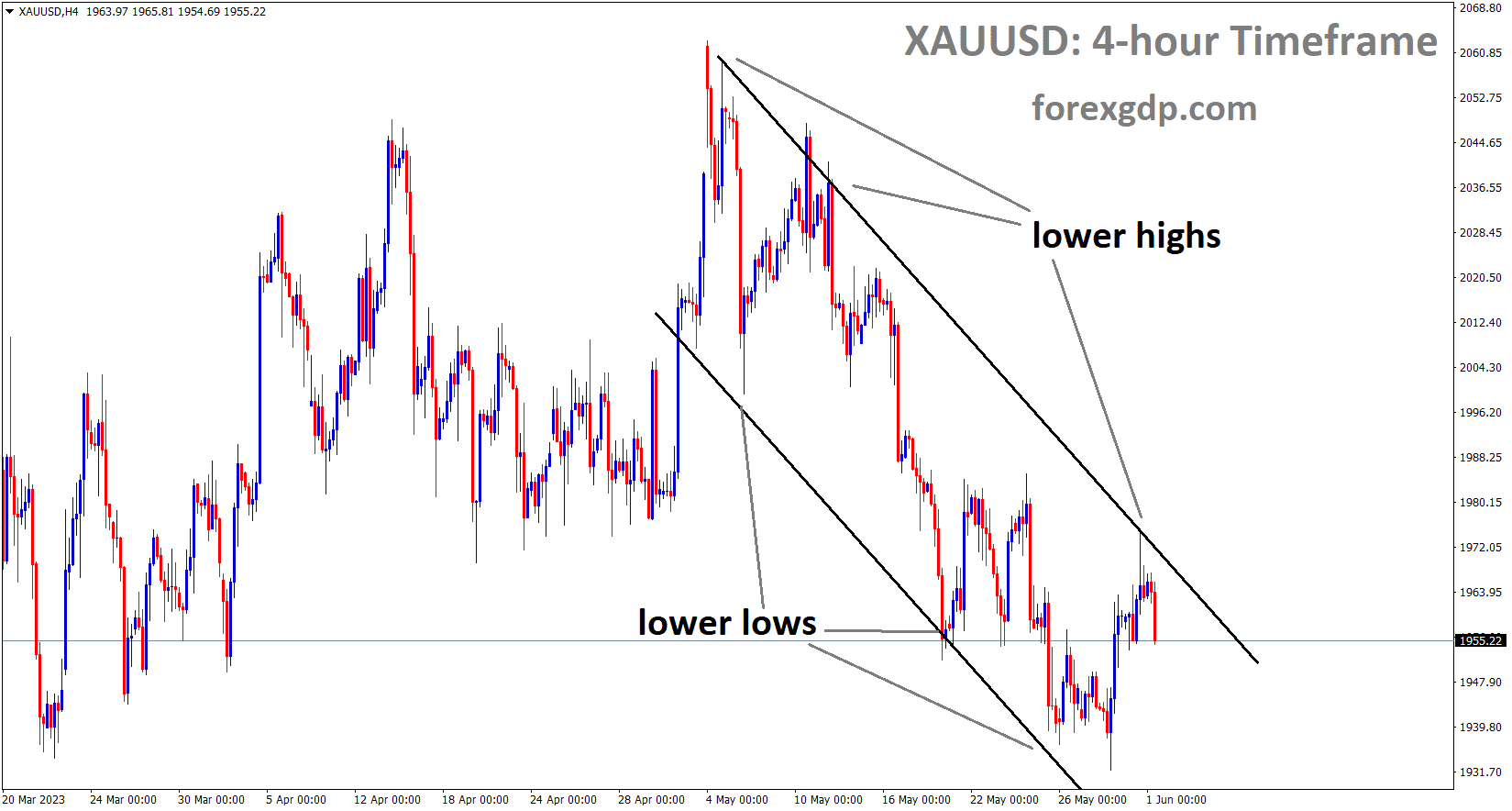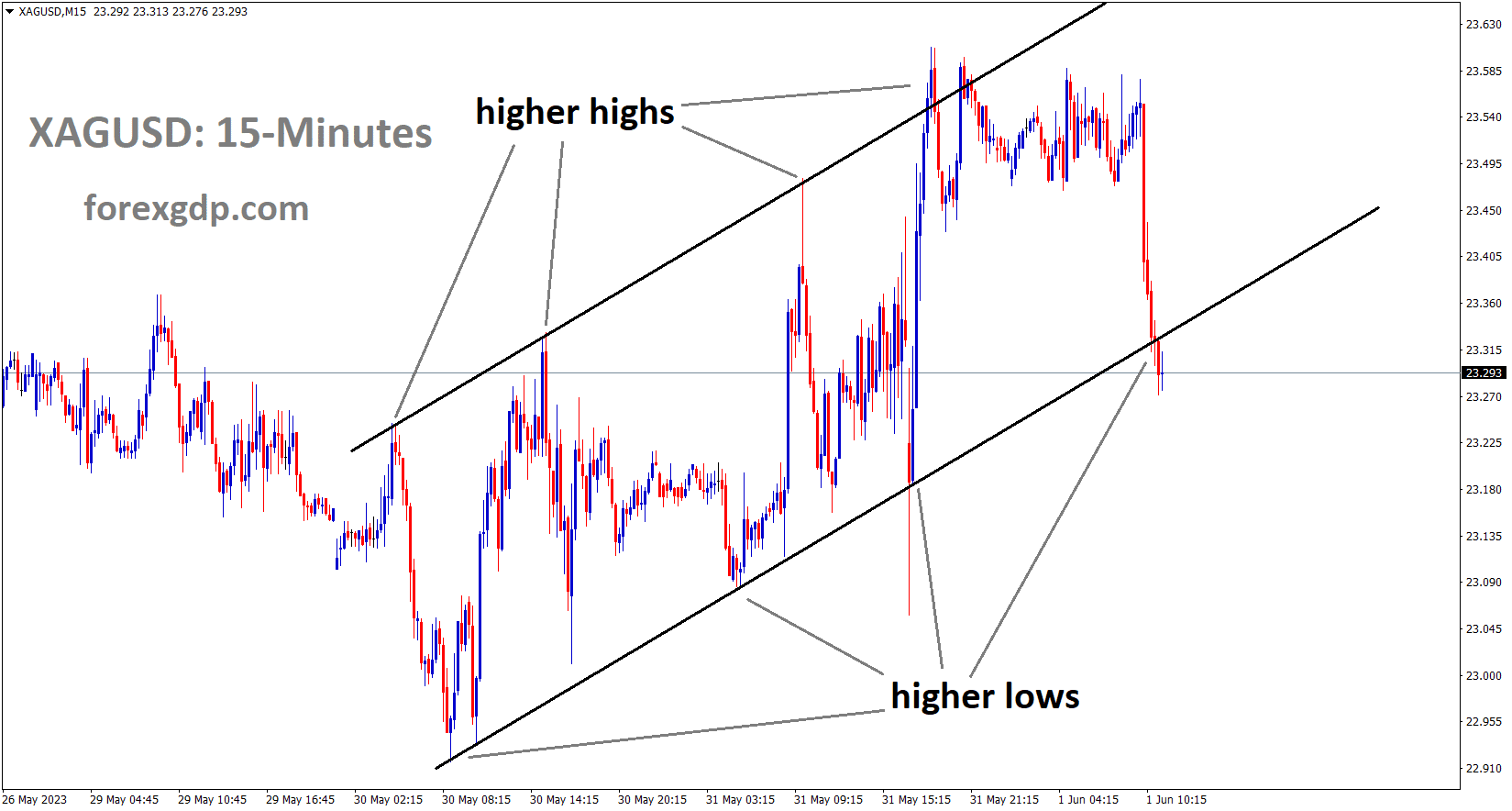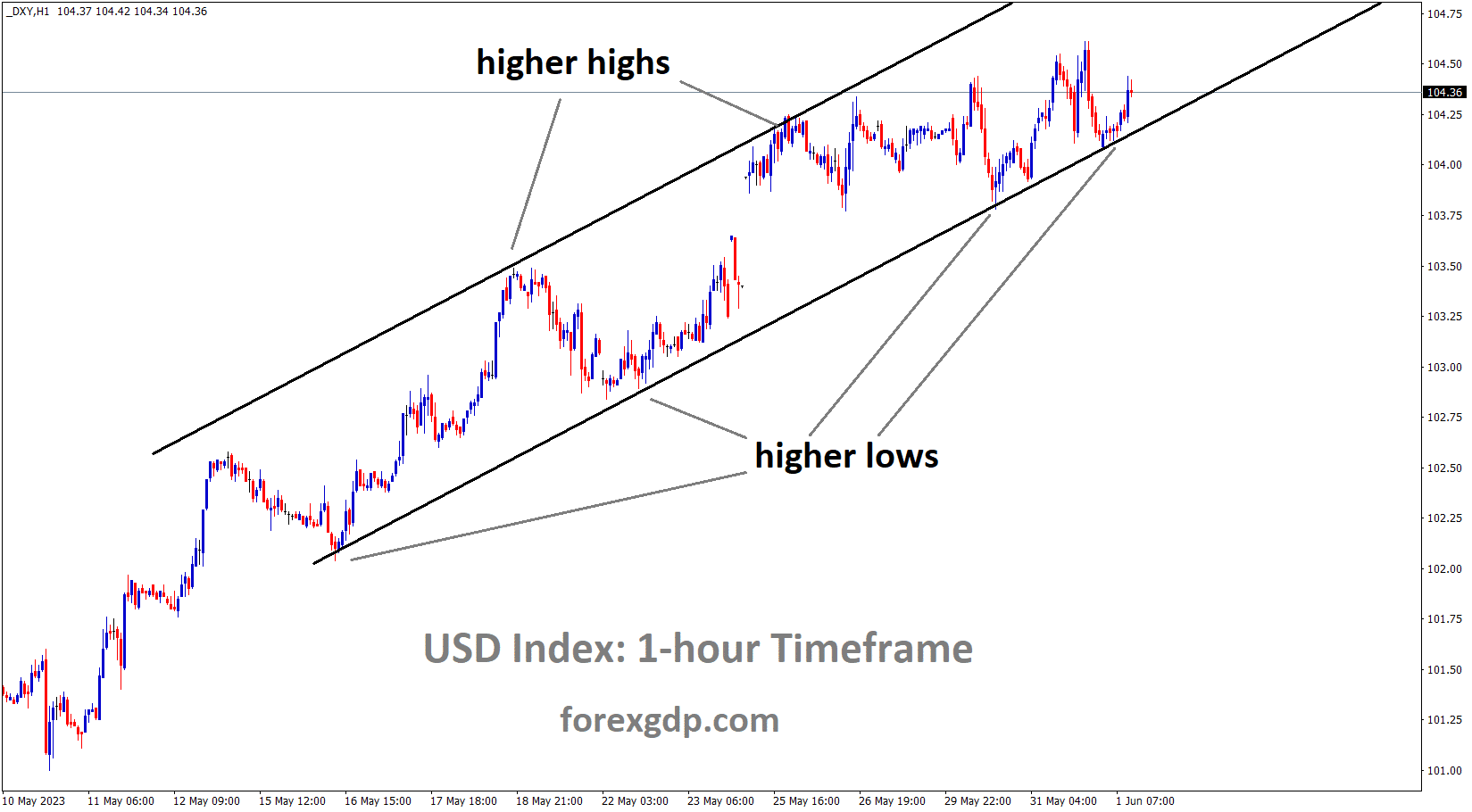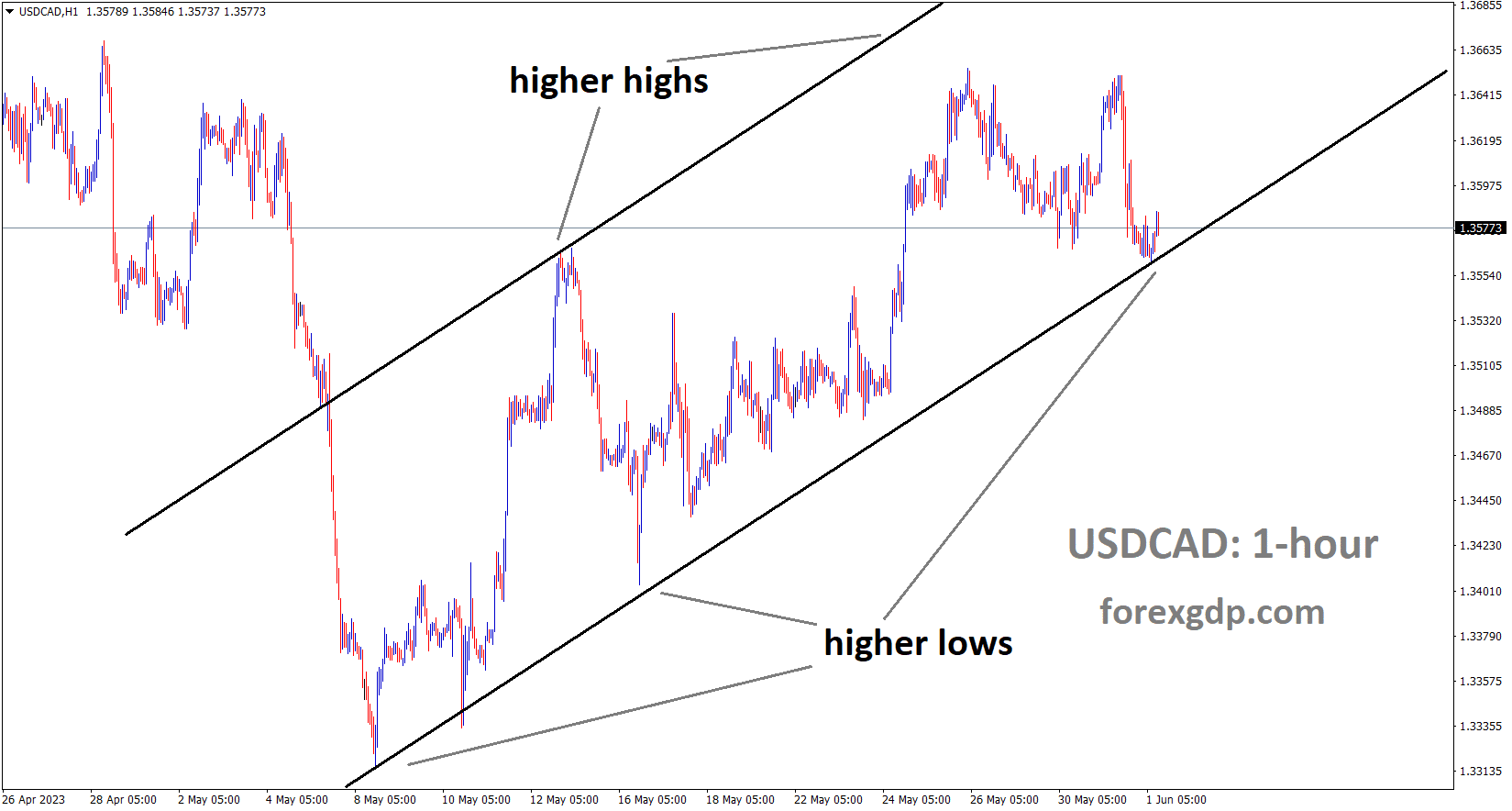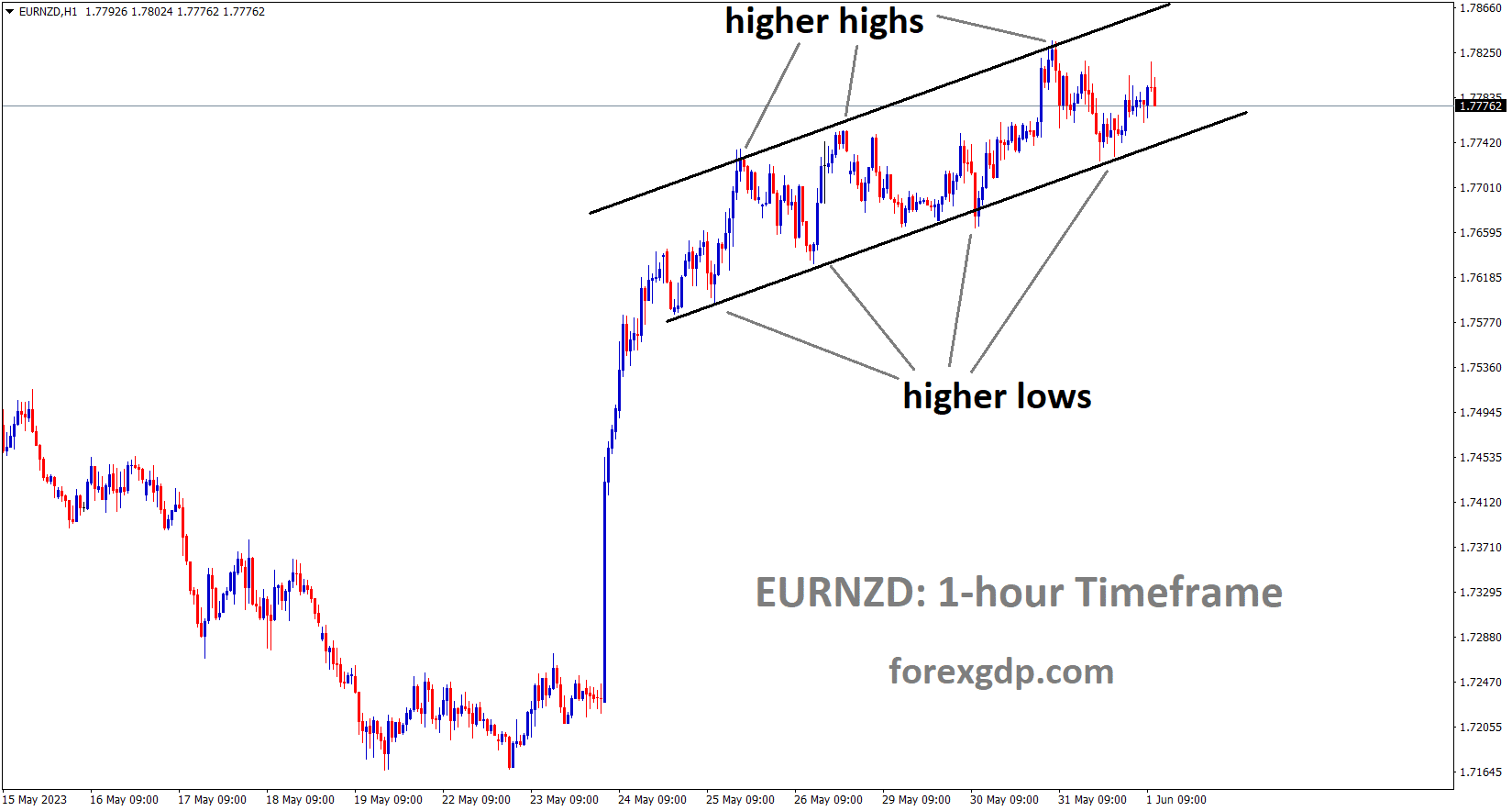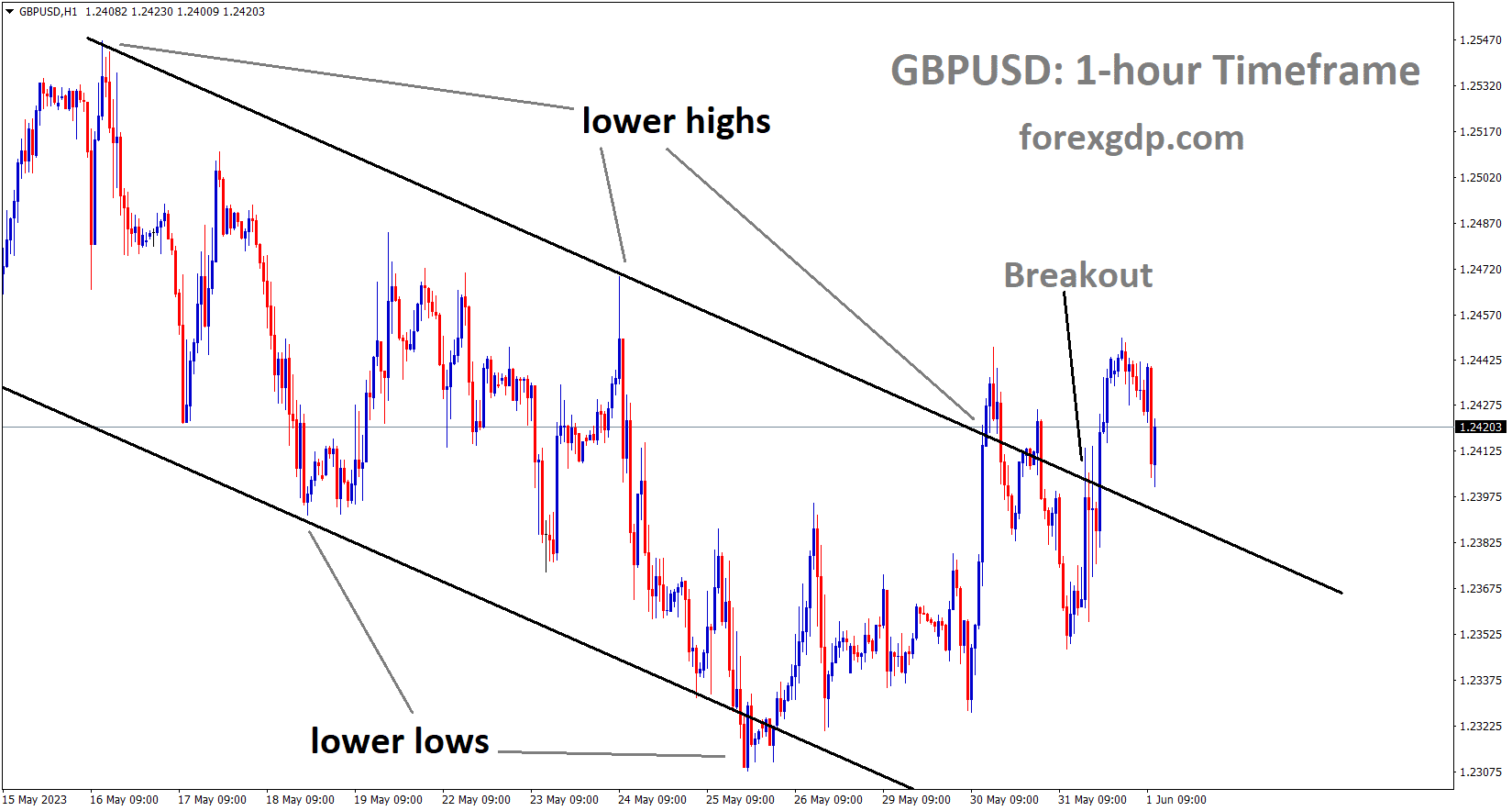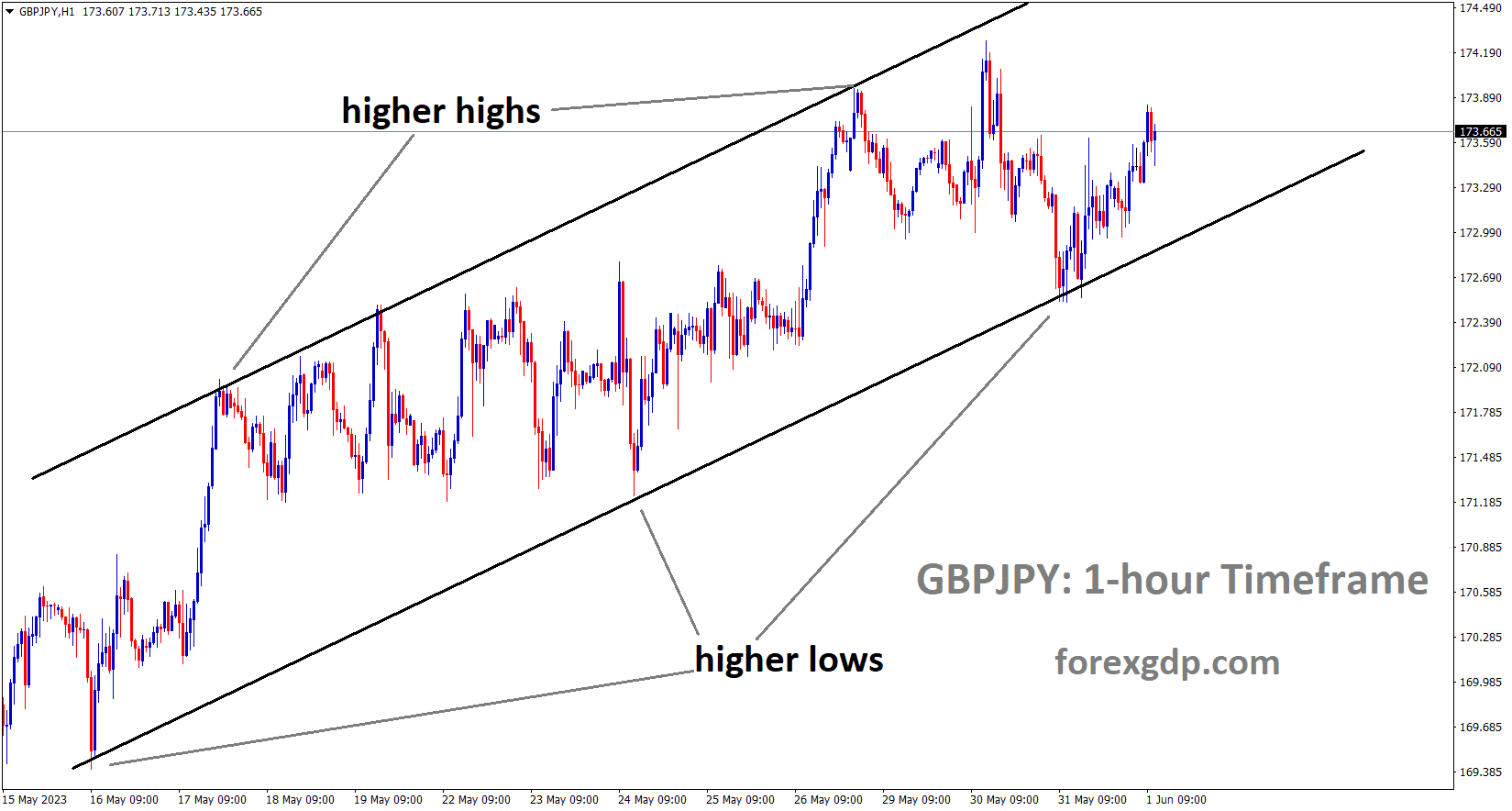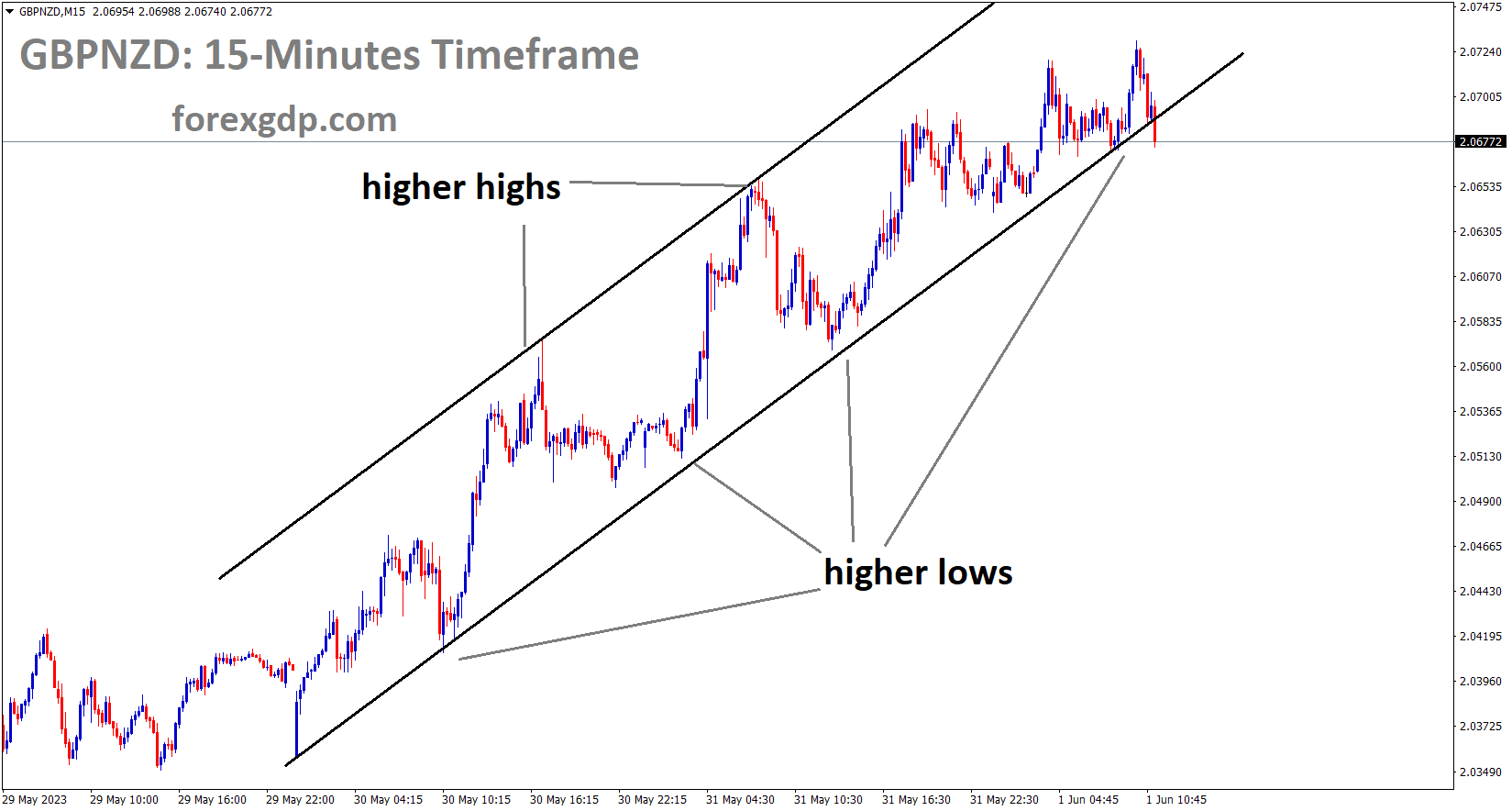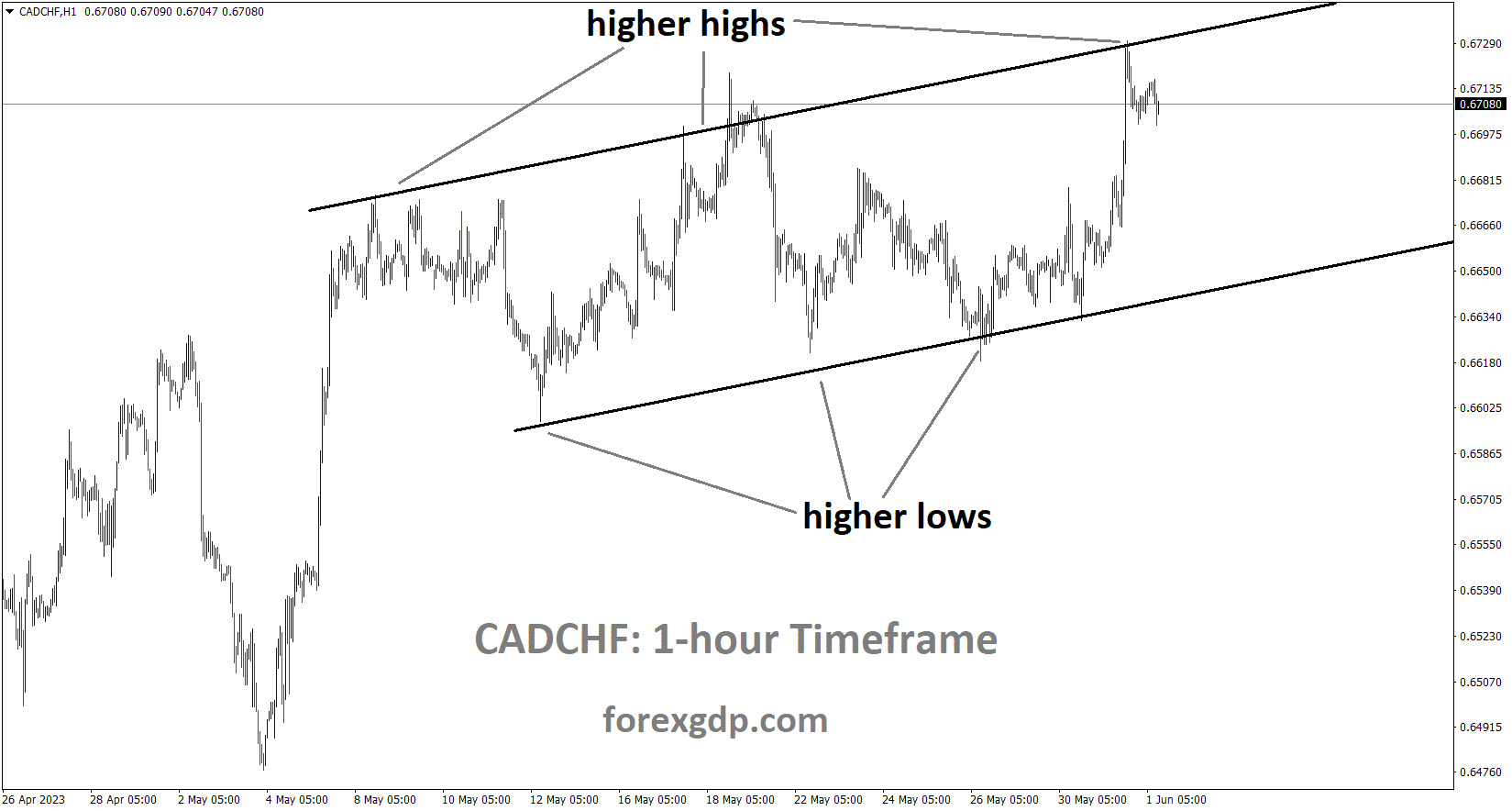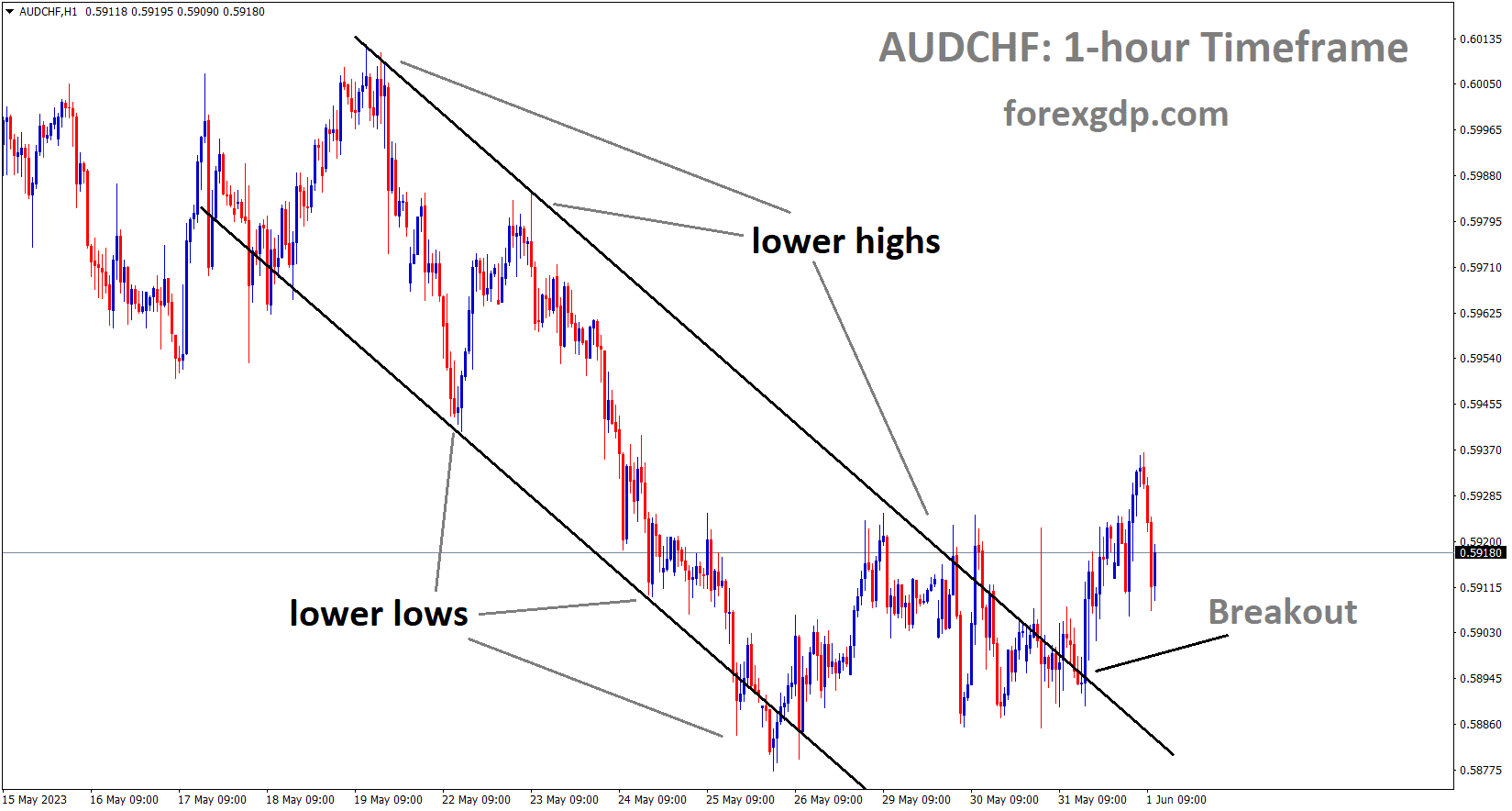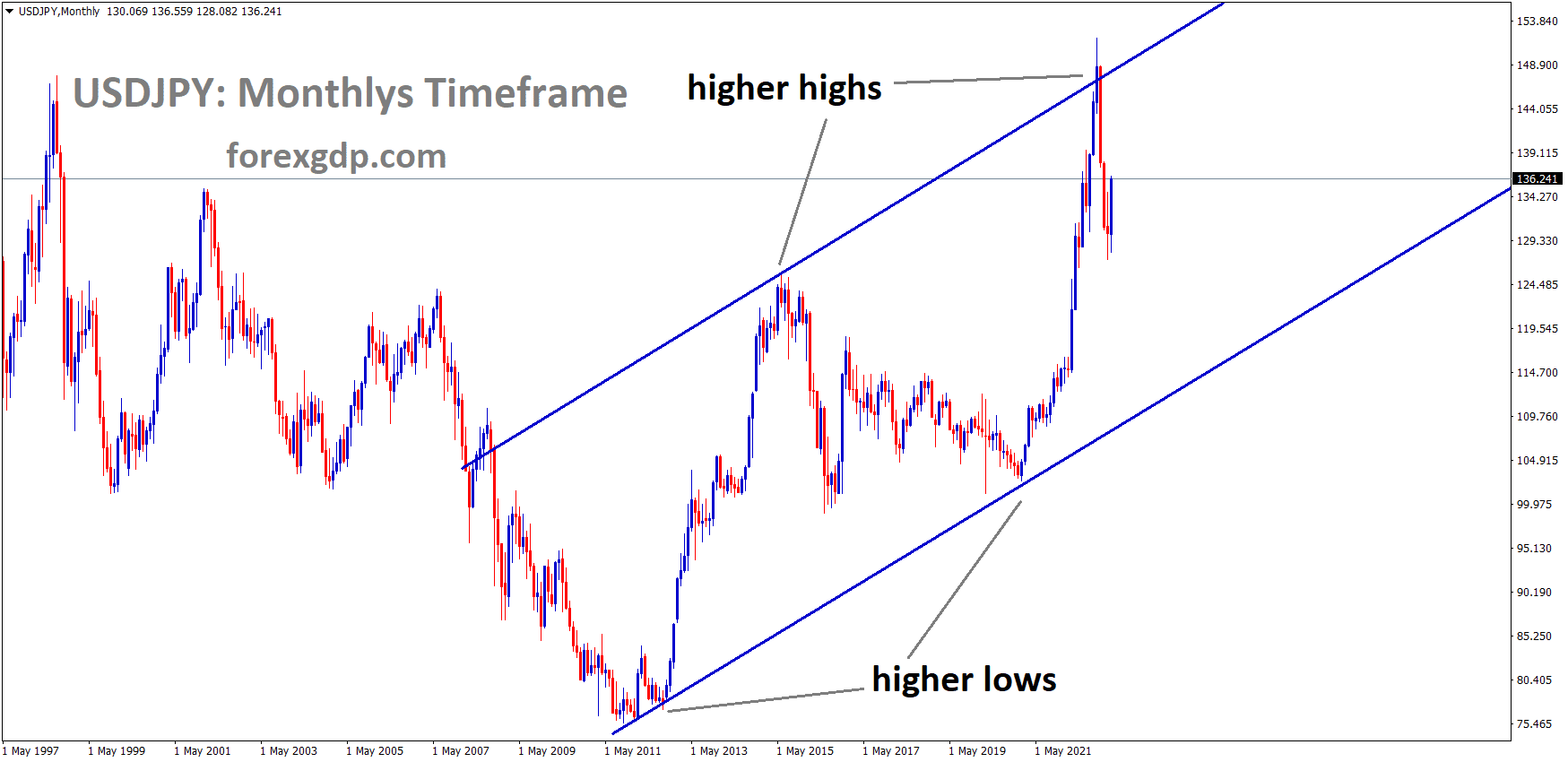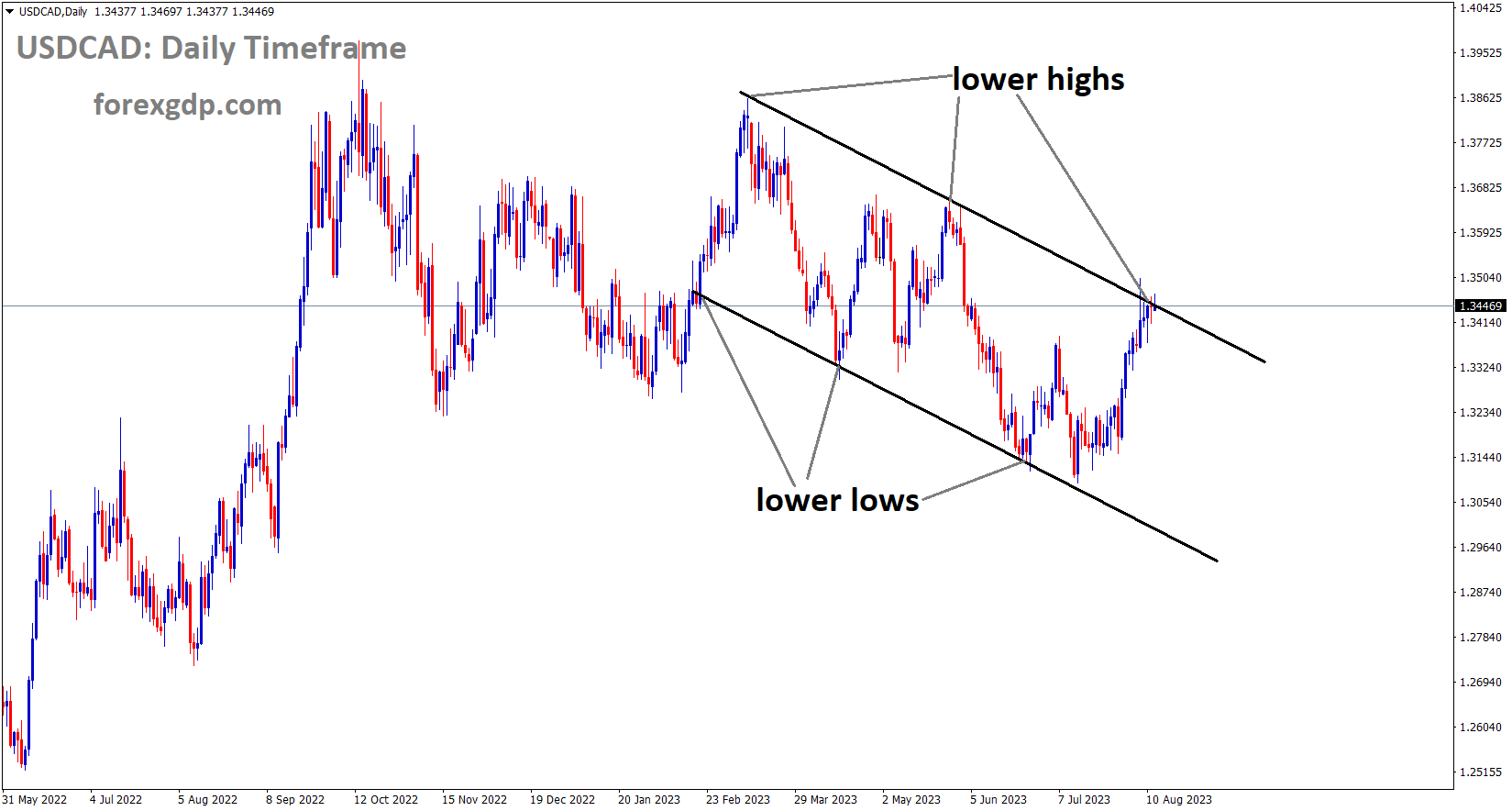GOLD Analysis
XAUUSD Gold price is moving in the Descending channel and the market has fallen from the lower high area of the channel.
The debt agreement was approved by the House of Representatives on the final day, and the Senate will vote on it on Friday. Data on US job openings last day came in higher than anticipated. There will not be a rate increase in the June meeting, according to US FED voting members, and a 25 bps rate increase in the July meeting has an 80% chance of happening. In anticipation of Friday’s Non-Farm Payrolls report and a deal to raise the US debt ceiling, gold prices declined.
With the US Dollar’s recent bull run coming to an end and Treasury yields easing after a surge higher into the last week of last month, the gold price has gained more stability this week. The commodity markets have been mixed, with some industrial metals facing challenges and concerns about the prospects for global growth following some unimpressive data this week. The low Chinese PMI readings from yesterday are concerning for base metals given the quantity of raw materials needed to support its rapid economic growth. However, today’s Caixin PMI number increased from the anticipated and prior 49.5 to 50.9. This PMI score is based on a smaller sample of Chinese companies than the official PMI. The DailFX.com economic calendar is available here and shows all the most recent economic data.However, the rolling over of Treasury yields seems to have supported the price of gold and silver. The majority of the curve’s US government bond yields have returned to levels last seen in early March, when Silicon Valley Bank Financial’s demise signalled the beginning of the local banking crisis.
SILVER Analysis
XAGUSD Silver price is moving in an Ascending channel and the market has reached the higher low area of the channel.
The benchmark 2-year bond reached its limit last Friday at 4.63% after earlier this month’s dip to 3.66%. Going into Thursday, it is currently trading at about 4.4%.To prevent a default, the US legislature must approve the debt ceiling agreement in the coming days. The House of Representatives approved it late on Wednesday night, Washington time, and the Senate will now consider it. The market’s attention may shift back to speculating on the Federal Reserve and its future monetary policy intentions if this goes off without a hitch. The remarks made by a number of Fed speakers seem to be advocating for a break during the Federal Open Market Committee meeting on June 14. Patrick Harker, president of the Philadelphia Federal Reserve Bank, and Philip Jefferson, governor of the Federal Reserve, both hinted last night that the Fed should’skip’ a hike at the next meeting.
The likelihood of a rate increase in June is low, but the July meeting is expected to result in a 25 basis point increase with an 80% chance. The direction of US interest rates is not entirely clear, and the Treasury market may experience increased volatility as a result. For the US Dollar, this might result in choppy trading conditions. These variables may then have an impact on gold’s movements.
USD Index Analysis
US Dollar index is moving in an Ascending channel and the market has rebounded from the higher low area of the channel
Instead of waiting for a deal to be approved by the Senate this Friday, the debt deal is being approved by the House of Representatives on Wednesday. Due to the strengthening US Dollar, the 1-year note increased to 5.20% from a 23-year high.
The optimism in the White House and anticipated favourable results from the investor’s side are preventing the US Dollar from defaulting on its debt.
Due to the strong US dollar, ambiguity surrounding US labour market data, and congressional opposition to raising the debt ceiling and falling US bond yields signify a bearish market sentiment fueled by increased demand for US bonds. The yield on the 10-year note retraced to 3.66% with a loss of 1.13%, while the yield on the 2-year note is now 4.38% with a decrease of 2.12%. The 5-year yield currently stands at 3.77% with losses of 1.33%.
Due to the release of significant labour market data from the US, the American bond market may experience some volatility. The US Bureau of Labour Statistics will release Non Farm Payrolls for May on Friday, and Automatic Data Processing Inc. will release employment change data for May on Thursday. In this regard, it is anticipated that both reports will show signs of worsening US labour market conditions, which could have an effect on the next Federal Reserve decision. Market participants currently anticipate a 25 basis point increase. Additionally, the 10.10M job openings reported by JOLTS, which was released on Wednesday from the US, exceeded expectations of 9.37M. Investors will be waiting for the Fed Beige book to be released for the remainder of the session in order to gain a better understanding of the US economy as it stands right now.
USDCAD Analysis
USDCAD is moving in an Ascending channel and the market has rebounded from the higher low area of the channel.
Canada’s first quarter GDP data exceeded expectations and strengthened the Canadian Dollar against other currencies yesterday. CAD GDP Q1 came in at 0.80% compared to an expected 0.40% and a previous reading of 0.0%. On Friday, the Lower House passed the US Debt Deal with Hope to the Senate, obtaining the full US Debt Agreement. The favourable debt deal kept the US dollar rising.
The USDCAD maintains its lower position at the weekly low as it continues its downward trend despite a slightly more positive risk outlook, a firmer oil price, and a weak US Dollar. Despite this, the Canadian dollar is down a little bit against the euro at press time on Thursday morning in Europe, hovering around 1.3565. Despite receiving recent bids, the US Dollar Index struggles to hold onto its weekly gains around 104.30 as mixed US data and Federal Reserve (Fed) talks raise worries that the US central bank has little room to raise interest rates. In light of this, allow Nick Timiraos of the Wall Street Journal to speculate that the Federal Open Market Committee will probably keep interest rates unchanged in June. The majority of US statistics were unimpressive, but Canada’s first-quarter GDP was a pleasant surprise for Loonie buyers and drowned the USDCAD pair the day before. However, compared to the 0.4% predicted and the 0.0% prior, the Canadian Q1 GDP increased to 0.8% QoQ.
In other news, the debt-ceiling bill was recently passed by the US House of Representatives, which is controlled by Republicans in the US. This helped the market’s optimism because the Senate is controlled by the ruling Democrats, who can now easily prevent the default. The US Dollar and the USDCAD price have recently been under downward pressure due to the same news. Additionally, WTI crude oil increases 1.22% in a single day to about $68.50 as buyers pick up after falling to the lowest levels in a month, breaking a two-day downtrend. It is important to note that, according to industry reports, the unexpected increase in oil inventories does not have an impact on the price of the black gold before this weekend’s OPEC+ meeting. The market mood, the recently firmer China Caixin Manufacturing PMI, and the US Dollar’s modest increase could all be contributing factors. In this environment, the S&P500 Futures record modest gains while the US Treasury bond yields recover from their weekly low. Looking ahead, the USDCAD pair’s intraday movements will be influenced by the preliminary readings of the US and Canadian PMIs for May, the US ADP Employment Change, and the US Senate’s vote on the bill to prevent the US default.
EURNZD Analysis
EURNZD is moving in an Ascending channel and the market has rebounded from the higher low area of the channel
German inflation for May came in at 6.1% compared to expectations of 6.5% and 7.2% in April. The ECB will continue raising interest rates in order to reach its target inflation rate of 2% to 3%. French and Italian inflation rates were also lower in May month data, which is good for the euro.
May saw a greater-than-anticipated decline in German inflation, which relieved pressure on the ECB to keep raising interest rates. German inflation came in at 6.1%, over one point lower than April’s reading of 7.2% and below expectations of 6.5%. French inflation, which was expected to be 5.5% and had previously been reported as 5.9%, was also lower than expected earlier in the session at 5.1%. Despite missing expectations, Italian inflation was 0.6% lower than last month. According to the most recent ECB Financial Stability Review, tighter financial and credit conditions are “testing the resilience of Euro Area firms, households, and sovereigns” and that “Euro Area financial markets remain vulnerable to less favourable growth and inflation outcomes. Additionally, the report foresaw the possibility of a decline in real estate prices, an increase in the cost of sovereign financing, and a potential resurgence of recessionary fears. The United States’ debt ceiling is likely to be raised today, according to the most recent news reports. The deal has enough support, according to Patrick McHenry, chairman of the House Financial Services Committee, who was quoted in a CNBC report, to pass both the House and the Senate. The latest CME rate probabilities indicate that another 25 basis point rate hike will be announced at the next FOMC meeting and that rates will remain at this level for the next two meetings, despite the fact that US Treasury yields are still slightly declining.
GBPUSD Analysis
GBPUSD has broken the Descending channel in upside.
Food price inflation in the UK is high, and the country’s ongoing labour shortages contribute to its persistent state of inflation. According to Nomura economists, the Bank of England will raise rates three more times in 2023.
Inflation eased this month to 8.7%, which is a bit slower than double-digit growth.
In the Asian session, there are significant barriers for the GBPUSD pair near 1.2450. The Cable has reached a new weekly high of 1.2450, but obstacles stand in the way of a full recovery due to conflicting opinions among Federal Reserve policymakers regarding interest rate guidance for the monetary policy meeting in June. Early in Tokyo, S&P500 futures added to their gains on expectations that Congress would approve the US debt-ceiling proposal. As investors begin to process the Federal Reserve’s decision to raise interest rates again at its June monetary policy meeting, the market is becoming more risk-averse. Market confusion is being caused by policymakers at the Fed’s varying perspectives on interest rate guidance. In an interview with the Financial Times, Cleveland Fed Bank President Loretta Mester stated, “I do not really see a compelling reason to pause,” which is code for waiting until you have more information before making a decision. Fed Governor Philip Jefferson stated in a speech on Wednesday that delaying rate increases at the following FOMC meeting would give the committee time to review additional data before deciding how much more tightening to implement. A pause, he continued, does not indicate that rates have peaked.
After falling sharply to close to 104.13, the US Dollar Index is now showing some strength. Investors appear to be returning their attention to data on US employment. According to estimates, the US economy added 170K new workers to the labour force in comparison to the previous 296K addition. On the front of the pound sterling, the Bank of England (BoE) is strengthening its case for another interest rate increase by the persistence of UK inflation. Due to higher food inflation and a labour shortage, the UK economy’s inflationary pressures are not abating as quickly as anticipated. The headline inflation rate in the UK slowed to 8.7% and finally left double-digit territory, but it still exceeded expectations in April. Nomura economists cited In light of the most recent inflation print, we have revised our prediction and believe that the BoE will raise rates by 25 basis points at each of the upcoming three meetings. They went on to say Therefore, we expect the BoE’s peak rates to be 5.25%.
GBPJPY Analysis
GBPJPY is moving in an Ascending channel and the market has rebounded from the higher low area of the channel
The Bank of Japan will soon tighten monetary policy, according to IMF Chief Economist Pierre- Olivier Gourinchas, if inflation stays high. If monetary policy is tightened, YCC yield curve control will be challenging. Therefore, raise short-term interest rates first to keep inflation below the 2% target.
It is too soon for the Bank of Japan to tighten monetary policy, according to Chief Economist of the International Monetary Fund Pierre-Olivier Gourinchas, as it will take time to re-anchor inflation expectations to its 2% target. If inflation continues to be too high, the BoJ must be prepared to tighten monetary policy. It will probably be very challenging for the BoJ to tighten monetary policy while still controlling the yield curve. If the need arises to tighten policy, it is probably safer for the BoJ to first move away from controlling long-term yield before raising short-term rates.
GBPNZD Analysis
GBPNZD is moving in an Ascending channel and the market has reached the higher low area of the channel.
Despite today’s positive manufacturing data from China published by Caixin, the New Zealand Dollar failed to gain. The official manufacturing data for China decreased this week from 49.2 to 48.8, which is more detrimental to the country’s economy’s recovery from COVID-19. Therefore, increased Chinese manufacturing will boost the value of the New Zealand Dollar in the markets.
The positive Caixin Manufacturing PMI data have not been used by the New Zealand Dollar to its advantage. In contrast to the consensus and the previous release of 49.5, IHS Markit reported the economic data at 50.9, which was higher. Investors should be aware that China’s official Manufacturing data decreased to 48.8 from the previously released 49.2 and the estimates of 49.4. It is important to remember that New Zealand is one of China’s top trading partners, and that increased factory activity in China might help the New Zealand Dollar.
CADCHF Analysis
CADCHF is moving in an Ascending channel and the market has reached the higher high area of the channel.
Swiss trade balance data decreased from the previous reading of 4526M to 2601M in April. The previous 17302 and 19902 printed imports and exports data increased from -22505M to 27031M, respectively. Therefore, a mixed bag of Swiss data caused the CHF to decline against currency pairs yesterday.
AUDCHF Analysis
AUDCHF has broken the Descending channel in upside.
The Australian Dollar declined against other currency pairs as inflation data for Australia dropped from highs and bond prices came in below expectations.
Negotiations over the US debt deal have caused the Australian dollar to weaken, and the RBA is predicted to hold rates steady at its meeting next week. Australian Dollar declines against other currency pairs as a result of China’s domestic data being weaker than anticipated.
Australian inflation in April and declining bond yields, the Australian Dollar is still under pressure. Following the news on Monday that Australian building permits had dropped sharply by 8% instead of the anticipated 2% increase, Australian yields have continued to fall. The 10-year bond has a yield of 3.60% and losses of 0.24%. The 5-year yield is at 3.37%, losing 0.24%, while the 2-year rate is at 3.55%, down by 0.51%.
Don’t trade all the time, trade forex only at the confirmed trade setups.
Get Live Free Signals now: forexgdp.com/forex-signals/

